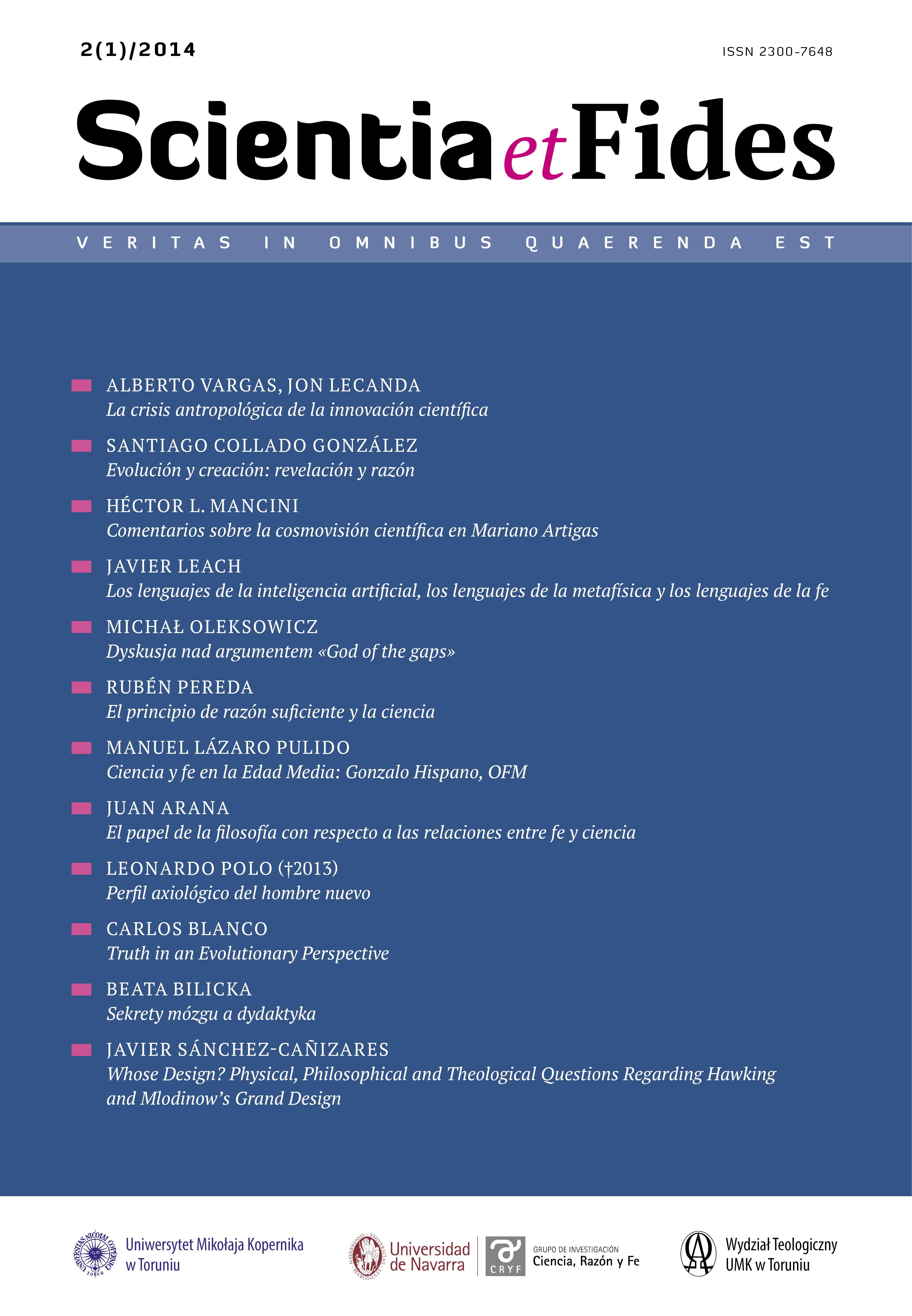The languages of artificial intelligence, the languages of metaphysics, and the languages of faith
DOI:
https://doi.org/10.12775/SetF.2014.004Keywords
formal languages of sign, symbol languages, artifi cial intelligence, metaphysics, religious faithAbstract
The formalization of the languages of mathematics has led to the formal languages of computer science and artificial intelligence. This article studies a few semantic properties of the formal languages of artificial intelligence, which I call languages of sign. This paper compares and opposes the semantic properties of these formal languages of artificial intelligence with the richer semantic properties of the languages of metaphysics and religious faith, which I call languages of symbol.
References
Carpenter, B.E., and R.W. Doran (eds.). 1986. A. M. Turing’s ACE Report of 1946 and Other Papers. Vol. 10 of Charles Babbage Institute Reprint Series for the History of Computing. Cambridge, MA: MIT Press.
Gödel, K. 1931. “Über formal unentscheidbare Sätze der Principia Mathematica und verwandter Systeme. ” Monatshefte für Mathematik und Physik 38: 173–198.
Kurzweil, R. 2011. “Kurzweil is confident machines will pass Turing Test by 2029.” Accessed February 28, 2014. http://singularityhub.com/2011/04/04/kurzweil-is-confi dent-machines-will-pass-turing-test-by–2029-video–2/.
Leach, J. 2010. Mathematics and Religion. West Conshohocken, Pa: Templeton Press. [Traducción española: 2011. Matemáticas y Religión. Madrid: Sal Terrae.]
Leach, J. 2012 “Taking Options and Decisions.” Revista Portuguesa de Filosofía 68/1–2: 87–104.
Leach, J. 2014 “I linguaggi della scienza, della metafisica e della religione.” La Civiltà Cattolica (to be published).
Searle, J. 1984. Minds, Brains and Science. Harvard: Harvard Univ Press. [Traducción española: 2001. Mentes, Cerebros, Ciencia. Madrid: Cátedra.]
Downloads
Published
How to Cite
Issue
Section
License

This work is licensed under a Creative Commons Attribution-NoDerivatives 4.0 International License.
CC BY ND 4.0. The Creator/Contributor is the Licensor, who grants the Licensee a non-exclusive license to use the Work on the fields indicated in the License Agreement.
- The Licensor grants the Licensee a non-exclusive license to use the Work/related rights item specified in § 1 within the following fields: a) recording of Work/related rights item; b) reproduction (multiplication) of Work/related rights item in print and digital technology (e-book, audiobook); c) placing the copies of the multiplied Work/related rights item on the market; d) entering the Work/related rights item to computer memory; e) distribution of the work in electronic version in the open access form on the basis of Creative Commons license (CC BY-ND 3.0) via the digital platform of the Nicolaus Copernicus University Press and file repository of the Nicolaus Copernicus University.
- Usage of the recorded Work by the Licensee within the above fields is not restricted by time, numbers or territory.
- The Licensor grants the license for the Work/related rights item to the Licensee free of charge and for an unspecified period of time.
FULL TEXT License Agreement
Stats
Number of views and downloads: 589
Number of citations: 1



